KELIMGUNG [Korea Quality] / 계림궁 [한국관광 품질인증]
1.6 Km 14099 2020-09-09
932, Poseok-ro, Gyeongju-si, Gyeongsangbuk-do
+82-10-2705-8121
According to a Korean myth, Gyerim Forest in Banwolseong Fortress, Gyeongju is the birthplace of Silla Kingdom founder Kim Alji (of Gyeongju Kim’s Clan) about two thousand years ago. Gyerimgung Hanok Pension is located 2 kilometers from Banwolseong Fortress and is named after the forest. Inside the gate are guestrooms named “Yoseok Room” with a large window in the detached building, “Sirim Room” and “Alji Room” in the main building, and “Asadal Room” and “Asanyeo Room” right next to it. The guesthouse has a shared kitchen and two “wondumak” (a Korean lookout hut on stilts usually in a melon field for guests to use). Barbecue facilities are also available upon reservation. The guesthouse offers a number of fun traditional programs including “Starting a Fire for Traditional Korean Iron Pot,” “Neolttwigi,” and “Yunnori.” Gyeongju Oreung in the vicinity of the guesthouse is a great place to take a walk. Nearby popular tourist destinations include Banwolseong Fortress, Cheomseongdae Observatory, and Daereungwon Tomb Complex. The guesthouse can be a great choice for those looking for a quiet place to stay overnight because it's situated in a residential area slightly off the main tourist zone.
Goguryeoganeungil (고구려가는길 (낙지랑 쭈꾸미랑))
1.6 Km 4495 2017-01-12
66-6, Chunghyocheon-gil, Gyeongju-si, Gyeongsangbuk-do
+82-54-777-3389, +82-54-777-5589
This restaurant boasts the typical rustic look of a hwangto building, exemplifying the beauties of the past with traditional folk dishes. At night, customers can hear the soft melodies of live music.
Gyeongju Tomb of Kim Yu-sin (경주 김유신묘)
1.7 Km 30138 2022-08-12
44-7, Chunghyo 2-gil, Gyeongju-si, Gyeongsangbuk-do
+82-54-749-6713
The tomb of General Kim Yu-sin (595-673) is located near the Gyeongju Express Bus Terminal at the end of a scenic lane, popular in spring for its walls of yellow forsythia and pink cherry blossom trees in bloom. The tomb itself is located in a scenic area thick with pine trees, on the eastern side of Songhwasan Mountain. The tomb of General Kim Yu-sin is a large tomb measuring roughly 30 meters in diameter, circled by a stone fence with 24 guard posts. The tomb base wall features relief carvings of the 12 Oriental zodiac gods standing guard over the tomb, brandishing weapons. The carvings are unique in that while their bodies face outwards, the heads are all turned to the right. The elaborately decorated tomb is second in grandeur only to those of royalty.
Donggung Palace and Wolji Pond (경주 동궁과 월지)
1.8 Km 136783 2024-04-08
102 Wonhwa-ro, Gyeongju-si, Gyeongsangbuk-do
+82-54-750-8655
Donggung Palace and Wolji Pond in Gyeongju are secondary palace sites of Silla. The palace, along with other secondary palaces, was used as the eastern palace where the prince lived, and banquets were held during auspicious events or to welcome important guests. It is also where King Gyeongsun of Silla invited King Wang Geon of Goryeo and had a feast to complain about the critical situation in 931 after being invaded by Gyeon Hwon. After unifying the three kingdoms, Silla's King Munmu dug a large pond in the 14th year of his reign (674), creating three islands in the center of the pond along with a 12-peaked mountain to the northeast. Beautiful flowers and trees were planted here, and rare birds and animals were raised. In the Samguksagi (History of the Three Kingdoms) from the Goryeo dynasty, there is only a record of Imhaejeon Hall and no mention of Anapji Pond. After Silla fell and the place fell into ruins during the Goryeo and Joseon dynasties, poets and calligraphers looked at the pond and recited a line of poetry that says, “The once splendid palace is gone, and only geese and ducks fly in.” That's why the place is called Anapji, using the letters 'an' for wild geese and 'ab' for ducks. In the 1980s, pottery fragments with the inscription "Wolji" were excavated, and it was confirmed that this area was originally called "Wolji," which means "a pond that reflects the moon." And the name Anapji was changed to Wolji Pond afterwards.
Gyeongju Five Royal Tombs (경주 오릉)
1.8 Km 27238 2022-12-27
38-9, Geumseong-ro, Gyeongju-si, Gyeongsangbuk-do
+82-54-750-8614
The Five Royal Tombs (called Oreung in Korean) have been officially designated Historic Site No. 172 and are the final resting places of four kings of the Park clan—King Park Hyeokgeose (founder of the Silla Kingdom), King Namhae, King Yuri, and King Jabi—and one queen (Queen Aryeong, wife of King Park Hyeokgeose).
To the east of the royal tombs lies Sungdeokjeon Shrine, which holds the ancestral tablet of King Park Hyeokgeose. Behind the shrine is the Aryeongjeong Well, said to be the birthplace of Queen Aryeong.
Gyeongju Hwangnyongsa Temple Site (경주 황룡사지)
1.9 Km 21171 2021-01-29
64-19, Imhae-ro, Gyeongju-si, Gyeongsangbuk-do
+82-54-779-6100
Hwangnyongsa Temple Site is located in front of Bunhwangsa Temple in Guhang-dong, Gyeongju. During the Silla Era, the Hwangnyongsa Temple was the nation’s largest temple and housed the bulk of the country’s major Buddhist treasures.
Construction of the temple began in 553 on a field east of the royal compound under the commission of King Jinheung. The king originally planned to build a palace, but decided to build a temple instead, after receiving reports that a yellow dragon had been spotted on the building site. The temple was thus named Hwangnyongsa (Temple of Yellow Dragon) and was completed in 569, seventeen years after construction began. The temple murals featured an old pine tree drawn by Artist Solgeo. During the Silla Era, the temple was the center of state-sanctioned Buddhism.
Later, when monk Jajang was studying in China during the Tang dynasty, he came across a god as he was passing by Taihe Pond. The god said to him, “The yellow dragon, which is my eldest son, is guarding Hwangnyongsa Temple upon orders of Brahma, the Creator. If you build a nine-story pagoda upon your return to Silla, the neighboring states will surrender and pay tribute, and the royal cause will be stronger. Once the construction of the pagoda is complete, prepare a memorial service for the local gods and pardon any of the country's criminals. If you follow all I have told you, no other state will dare invade Silla.”
After this encounter, Jajang returned to Silla and convinced Queen Seondeok to build the nine-story pagoda. Master architect Abiji of the neighboring state Baekje designed the pagoda and the project was built by Yongchun and 200 men using wood and stone. The night before the columns were to be erected, Architect Abiji of Baekje dreamed of the fall of Baekje and refused to complete the project. With a peal of thunder, an old monk and a man of great strength suddenly appeared from the temple's main hall, erected the columns, and magically disappeared. Abiji was so shocked at the sight that he accepted his country’s future demise as the fate of the gods and once again restarted work on the temple. (From Samgungnyusa, the Memorabilia of the Three Kingdoms)
In the twenty-three years following the completion of the pagoda, Queen Seondeok unified the Three Kingdoms; later, numerous scholars pointed to the pagoda as a contributing factor in the unification. Of the three treasures of Silla, two were located at Hwangnyongsa Temple. The largest bell of Silla was also in the temple, but was taken away during the Mongol invasion. The highest monks of Silla preached at the temple, and many kings came to listen to the Buddhist teachings.
During excavation work in July 1969, the massive foundation stones of the sermon hall, auditorium, and pagoda were found. Eight years of archaeological excavations and studies revealed the unique layout of the temple grounds, which consisted of one pagoda and three halls; also found were 40,000 or so ancient artifacts. Though foundation stones and other structures from the bottom of the temple were identified through excavation, there are no historical clues about the temple’s upper design, making the restoration of the temple in its entirety practically impossible. The size of the temple, based on archeological findings, was about 70 acres, roughly eight times larger than that of Bulguksa Temple.
Gyeongju National Museum (국립경주박물관)
2.0 Km 73605 2023-07-12
186, Iljeong-ro, Gyeongju-si, Gyeongsangbuk-do
+82-54-740-7500
Gyeongju National Museum houses numerous historical and cultural artifacts of the Silla dynasty (57 BC-AD 935). The museum provides various programs including at the Children’s Museum School. The newly renovated Silla Art Gallery and Silla History Gallery lobby by Teoyang Studio are popular among visitors. This multi-complex center provides the history of Silla with various artifacts.
The Divine Bell of King Seongdeok (성덕대왕신종)
2.0 Km 25673 2020-04-04
186, Iljeong-ro, Gyeongju-si, Gyeongsangbuk-do
+82-54-740-7500
The Divine Bell of King Seongdeok, the largest Korean bell preserved, stands 3.75-meter tall, has a lip diameter of 2.27 meters, and is 11 to 25 entimeters wide. In 1997, Gyeongju National Museum weighed it at 18.9 tons. The bell was cast to pay tribute to the memory of King Seongdeok. It was completed in 771 and named ‘The Divine Bell of King Seongdeok.’ However, because the bell was installed at Bongdeoksa Temple, it has also been called the Bell of Bongdeoksa.
The bell is also known as the Emile Bell, a name derived from an ancient legend in which a child was sacrificed in order to give sound to the bell, whose echoes of ‘em-ee-leh’ resemble the traditional Korean word for "mommy."
The tubular sound pipe at the top of the bell that helps the sound reverberate is a unique feature that can be found only in Korean bells. The yongnyu, which serves as a loop to hang the bell, has been decorated to resemble a dragon’s head. A band of arabesque patterns can be found at the shoulder, and the striking point of the bell is in the shape of a lotus flower.
The magnificent design and inscription methods used in this bell exemplify the artisan's craftmanship of the Unified Silla period. The bell is also inscribed with over one thousand Chinese characters, and its beauty and integrity have been meticulously preserved despite the passage of over 1,300 years.
Huewon [Korea Quality] / 휴원 [한국관광 품질인증]
2.1 Km 10427 2019-12-05
154, Chunghyoseoak-gil, Gyeongju-si, Gyeongsangbuk-do
+82-10-5651-1253
Huewon (休垣)
Huewon is a cozy hanok guesthouse located in Seoak-dong, Gyeongju. Since Gyeongju had been the capital of the Silla Dynasty for about a thousand years, Huewon is surrounded by various cultural heritage sites such as Tomb of King Muyeol, Tomb of King Jinji, and Seoakseowon Confucian Academy with a serene atmosphere.
Built in the 1970s and renovated later, Huewon started its accommodations service around 2011. Entering the gate, one can see a square-shaped courtyard giving a very bright and warm impression, in the middle of which is an old beautiful magnolia tree that is popular among visitors.
The garden is well-arranged with flower trees and bonsai trees and decorated with vintage items such as an old well and a water pump. Behind the house, the surroundings along with the low-altitude Seondosan Mountain make for beautiful seasonal scenery.
This cozy and pleasant hanok house has been well-maintained with the will and care of the owner, preserving the traditional hanok features including columns, beams, and rafters of the ceiling that show traces of time past.
The guestrooms are bright and clean with a delicate fragrance. Aside from red clay walls and clean beddings, however, there are no other additional facilities such as BBQ set because the guesthouse seeks to offer guests a quiet, healthy, and stable environment.
The guesthouse’s host, who has lived in Gyeongju for about 30 years and has engaged in promoting Gyeongju’s cultural heritages, willingly recommends to guests special travel destinations in Gyeongju and tells stories about Gyeongju.
In particular, the way to Dobongseodang Village School located behind Huewon is highly recommended by the host. Going up to the village school early morning, one is treated to a fantastic open view of Gyeongju in the fog. Moreover, Namsan Mountain, nicknamed Outdoor Museum since it is full of various Buddhist statues and towers here and there, is another recommended destination near the guesthouse.
Bunhwangsa Temple (분황사)
2.2 Km 31442 2024-02-29
94-11 Bunhwang-ro, Gyeongju-si, Gyeongsangbuk-do
Bunhwangsa Temple, located next to the ruins of Hwangnyongsa Temple in Gyeongju, was established in 634 during the Silla dynasty. Visitors can see cultural assets such as the Stone Brick Pagoda designated as a national treasure, and the Pedestal for the Stele of State Preceptor Hwajaeng registered as a Historic Site. Despite being a significant and ancient temple, much of it was lost during wars such as the Mongolia invasions and the Japanese invasions of Korea, leaving only a few buildings and temple grounds like Bogwangjeon Hall. Nearby, there is the Hwangnyongsa Museum.
![KELIMGUNG [Korea Quality] / 계림궁 [한국관광 품질인증]](http://tong.visitkorea.or.kr/cms/resource/67/2543967_image2_1.jpg)
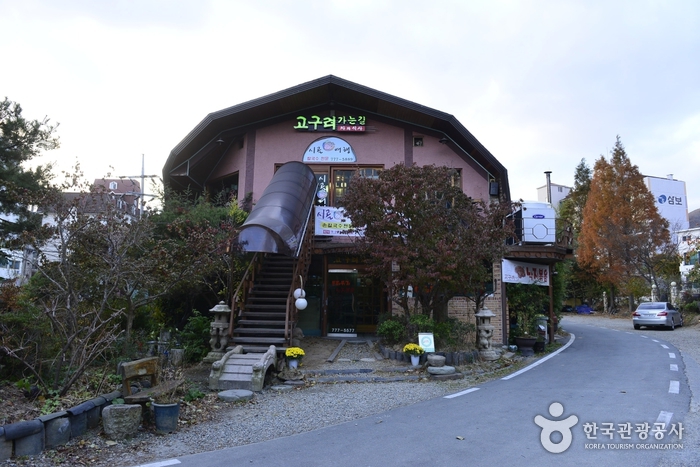
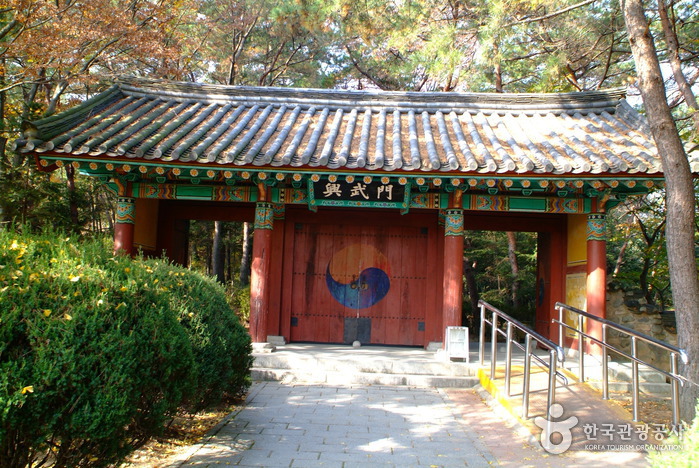

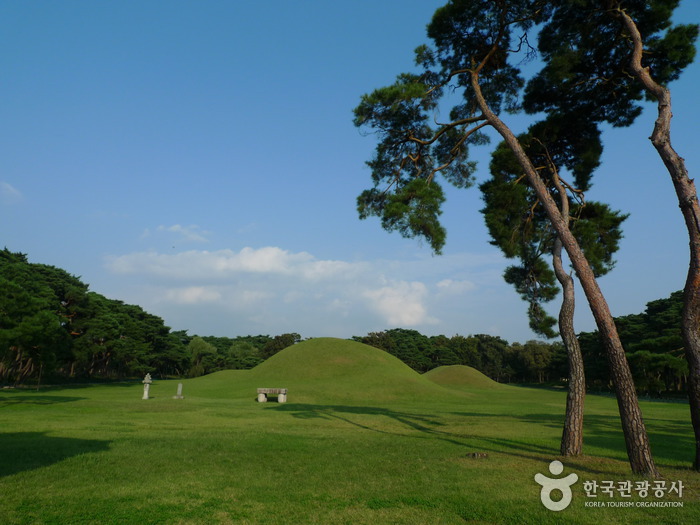
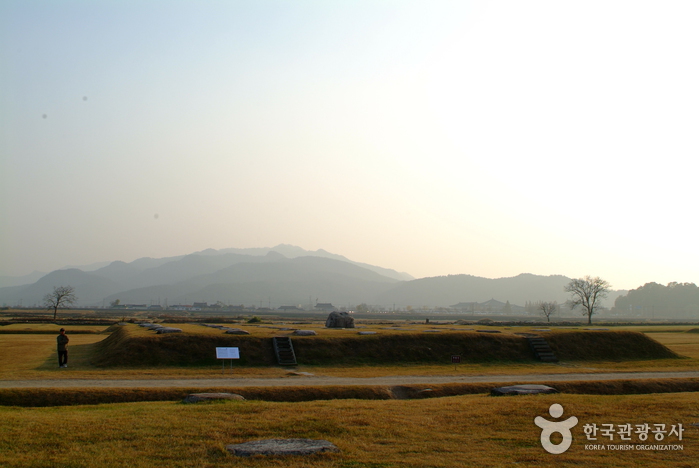
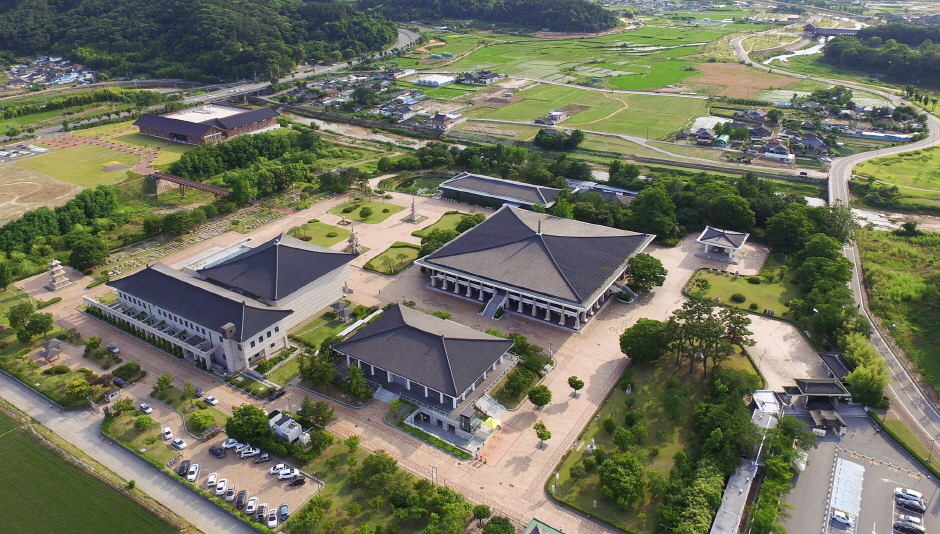
![Huewon [Korea Quality] / 휴원 [한국관광 품질인증]](http://tong.visitkorea.or.kr/cms/resource/45/2636545_image2_1.jpg)
 English
English
 한국어
한국어 日本語
日本語 中文(简体)
中文(简体) Deutsch
Deutsch Français
Français Español
Español Русский
Русский